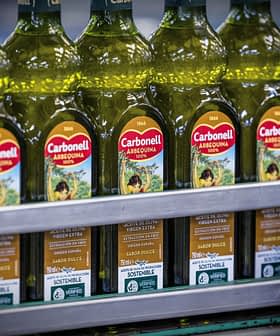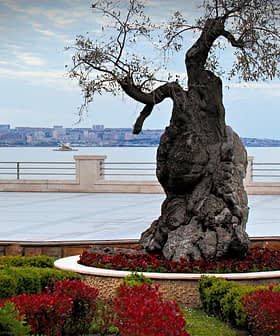
Selling olive oil’s nutritional and health benefits to the Japanese is the focus of a new campaign being developed by the International Olive Council.
IOC executive director Jean-Louis Barjol said the plan awaited a green light from the IOC board but he hoped it could get started towards the end of the year.
Speaking in Spanish at the World Bulk Oil Exhibition in Madrid, Barjol said material used in the campaign to promote olive oil and table olives could also be used as part of the IOC’s ongoing promotion work in China.
He said he also had good news about a change in consumer behaviour in China, where olive oil imports continue to soar.
“The Chinese consumer is no longer mainly buying olive oil as a slightly unusual gift for friends, they are increasingly buying it to use themselves,” he said.
One of the main Chinese importers was working towards the establishment of the country’s first IOC-approved tasting panel, an initiative the IOC was providing assistance for.
Last year the IOC commissioned market research on Japan, South Korea and Australia ahead of choosing one of the three for a new campaign. Barjol said today that research showed that the South Korean market was complex but looked very interesting, though sales were currently low.
“The South Korean people are already familiar with olive oil, and reached a certain level of consumption (in 2004/05) which then fell when people shifted to grapeseed oil.”
It was a market that must not be neglected because it could play a double role, he said.
Not only was there potential to claim back market share thanks to the high purchasing power of consumers there, South Korea also had an impact on trends in China. “If olive oil became fashionable in South Korea it could have a big influence on the Chinese,” Barjol said.
As for Australia, current levels of olive oil imports into that country were unlikely to change because it was increasing its consumption at the same time as its production.
“I have a lot of respect for Australia but it is a complicated country and it’s not easy to work with them,” Barjol said.
Asked after his speech to clarify the comment, Barjol said that at times “It is difficult to know what the Australians are looking for.”
The Australian olive oil sector sometimes seemed out of step with the reality of Australian consumer behavior, he said. “The statistics show that the Australian consumer is the same as consumers elsewhere in the world, they are interested in both virgin and pomace oil. For price reasons they want virgin olive oil for cold dishes and many buy pomace for frying,” he said.








